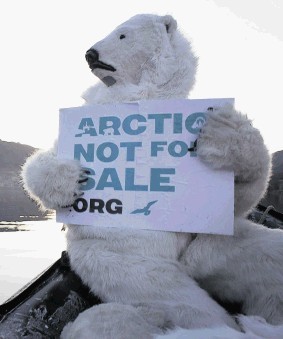
Norway’s Petroleum Safety Authority and environmental agency have together warned of an urgent need to develop counter pollution measures that would actually work in Arctic waters.
They have also warned that companies, especially operators and drilling contractors, must share their collective experience and knowledge of working at such high latitudes.
That knowledge “must be put on the table and systematised”.
Speaking at last month’s Når ulykker truer seminar, Ellen Hambro, director general of the Norwegian Environment Agency, and Anne Myhrvold, DG of the PSA, said: “The precautionary principle is fundamental now that petroleum activities are advancing further and further north on the Norwegian Continental Shelf.”
They said that Arctic waters pose different potential challenges than areas further south.
Critical among these are that low temperatures increase the risk of icing, drift ice and collisions with icebergs; it is dark for half of the year; and polar low pressure systems can bring on sudden changes in the weather with driving snow and strong winds.
Distances are also long and operations in areas without existing infrastructure present logistical difficulties for ordinary transport and for emergency response.
At the same time, the Barents Sea and northern Norwegian Sea are known to be vital feeding, spawning and nesting grounds for many species of fish and birds.
The eco-system around the ice edge is especially productive, and the combination of huge biological diversity and high levels of production make these areas extremely valuable, both environmentally and economically.
The PSA is clear about its job . . . petroleum activities must be conducted as safely in the Barents Sea, where there is already production and growing pressure from exploration activities, as on the rest of the NCS.
Myhrvold pointed out that, in practice, this means that the special natural conditions in the north may require different technical solutions than further south on the Shelf.
“In areas where the current technical solutions are inadequate, the industry itself needs to produce specific recommendations for resolving the difficulties,” she told delegates.
“The responsibility for operating in a prudent manner rests with the companies.”
As for handling what she described as “acute” pollution, Hambro said: “We have insufficient knowledge about how emergency response measures work in the ice-filled waters in the High North.
“For example, how do we handle oil spills in the ice?
“Many experts propose burning as an effective means of removing oil between ice floes, but it is not known how effective this is for larger oil spills.”
She stated too that the use of dispersants to combat oil pollution in the Arctic “have not been sufficiently well tested”.
“Normally, the Environment Agency requires industry to use the best available techniques (BAT) for emergency preparedness for acute pollution. But we currently know too little about how these work when oil meets ice,” said Hambro.
“There is a need for improvements in technology and know-how for emergency preparedness in ice-filled waters.
“This is an urgent issue since we are already having to deal with applications for exploration drilling for oil operations on the ice edge.
The oil industry has a responsibility for providing us with the basis we need to be able to regulate petroleum activities.”
Turning to knowledge-sharing, Myhrvold and Hambro said that a number of companies had gained experience in Norwegian waters and elsewhere and the sum total of this had to be shared.
“For example, in exploration drilling, it will be advantageous to have several rigs in operation at the same time. This allows more resources to be on hand if something goes wrong,” they said.
However, they admitted too that current “stringent” requirements from the agencies “will not solve all the problems”.
“The oil companies need to assume their share of the responsibility. This requires cooperation and a shared understanding of which are the most important challenges.
“Precaution is the main principle underpinning our administrative activities. The industry needs to be able to say the same,” they added.
Recommended for you
